Chicago in the 1990s was a city in the midst of profound change. Once seen as another casualty of the declining Rust Belt, it reshaped itself into a modern metropolis with global reach.
The decade began on uncertain footing—U.S. Steel’s South Works, which had employed tens of thousands of workers, closed in 1992, marking the symbolic end of an industrial era.
Yet, rather than falter, the city redirected its energy toward new industries.
These fascinating photos were taken by Steven Martin that show street scenes of Chicago in the early to mid-1990s.
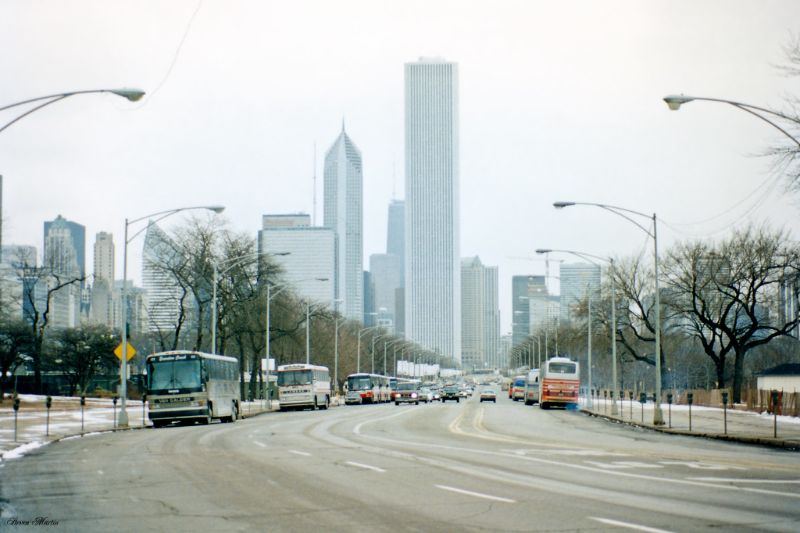
Columbus Drive, Grant Park, Chicago, February 1996.
By the late 1990s, Chicago had become a hub for professional services, with ad agencies, law firms, consultants, and investment banks multiplying rapidly.
In just over a decade, employment in these sectors grew from around 17,000 to more than 60,000. Unlike many of its Midwestern neighbors, Chicago was not bound to a single industry.
Its economy was as diverse as its people—built on publishing, insurance, finance, grain trading, and transportation.
The city’s central location only strengthened its position, with O’Hare International Airport ranked as the busiest in the world, enabling businesses to connect effortlessly across the country.
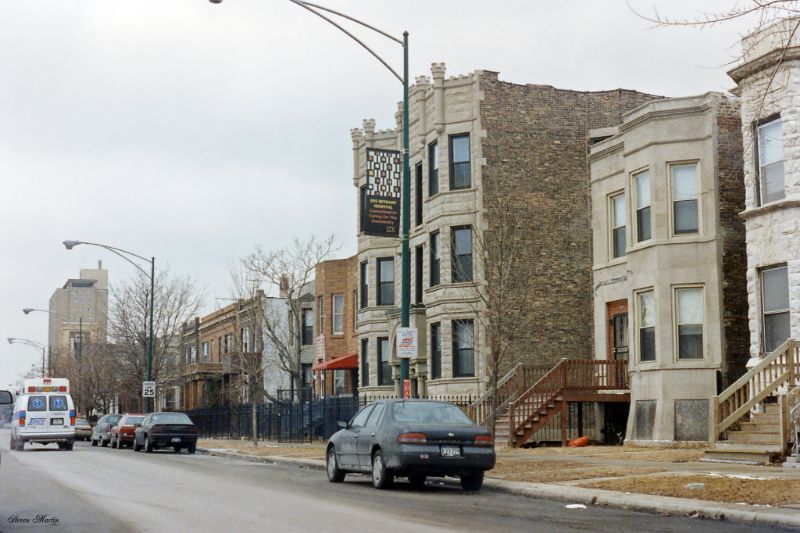
Congress Parkway looking west, Chicago, February 1996.
While commerce flourished, culture did as well. The 1990s turned Chicago into one of the nation’s creative hotspots, particularly for music and performance.
Indie and post-punk bands found a home in venues like Lounge Ax, while local labels such as Drag City, Touch and Go, and Bloodshot Records championed emerging talent.
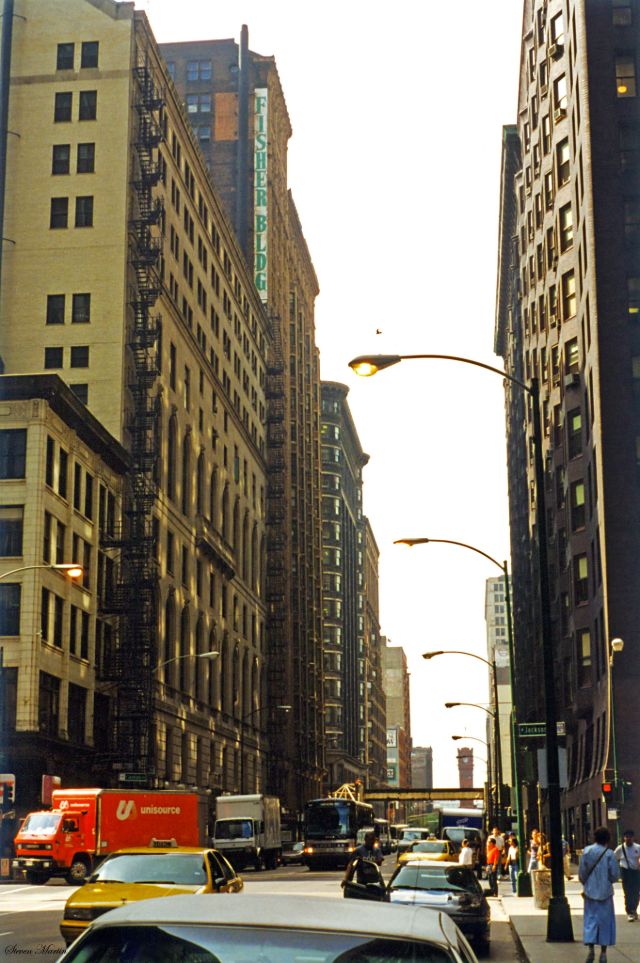
Dearborn Street looking south, in front of Federal Plaza, Chicago, July 1996.
The city’s alternative spirit extended beyond music; experimental cabaret shows like The New Variety blended comedy, clowning, and live blues, reflecting the eclectic energy of the time.
By the decade’s end, Chicago had even carved out a national reputation as the heart of the alt-country movement, fueled by acts like Wilco and Robbie Fulks.
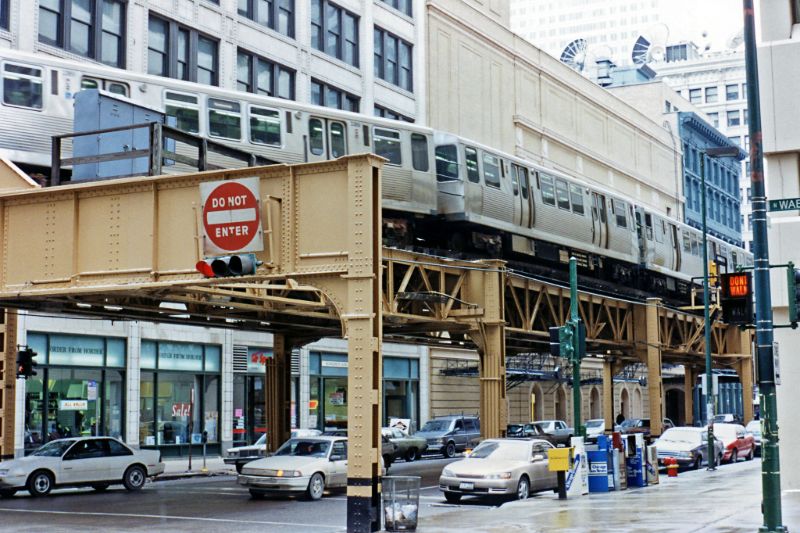
El train turning on the curve from Wabash Avenue to Lake Street in the Loop, Chicago, February 1996.
But alongside its artistic boom, the city grappled with serious challenges. Crime was a pressing concern in the early 1990s, prompting the launch of the Chicago Alternative Policing Strategy (CAPS) in 1991.
The program aimed to bridge the gap between police and residents through community partnerships.
Over the next decade, crime rates fell significantly—nearly 50 percent by 2002—though the benefits were not felt equally across all neighborhoods.
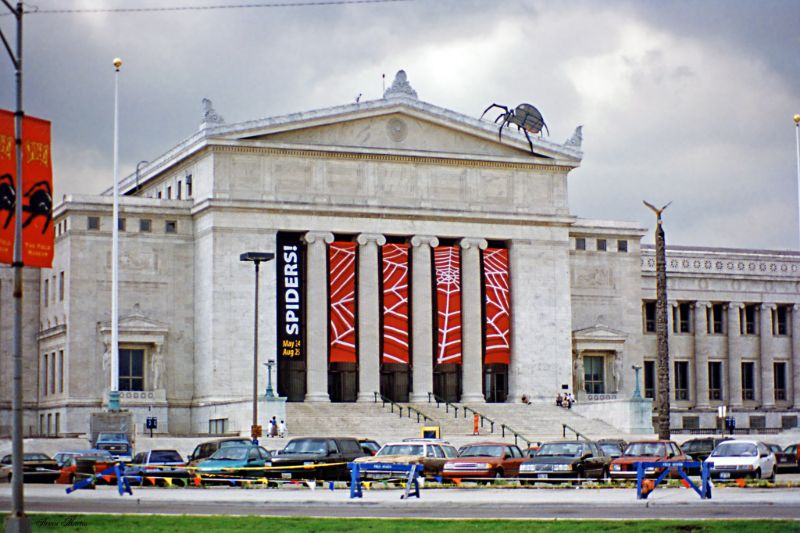
Field Museum of Natural History, Chicago, July 1996.
Housing, too, became a symbol of the city’s transformation. The iconic Cabrini–Green projects, long associated with poverty and crime, began to be dismantled in the mid-1990s.
City leaders, with federal support, pushed to replace them with mixed-income communities.
The plan was ambitious and controversial, as it displaced thousands of families while attempting to redefine the city’s urban landscape.

Hilton and Blackstone Hotels from Congress Parkway, Grant Park, July 1996.
Perhaps nowhere was the ‘90s spirit more visible than in Wicker Park. Originally a gritty, affordable haven for artists and bohemians, the neighborhood bloomed into a creative epicenter.
Residents reminisced: “A typical Milwaukee Ave … day in the early ’90s would start with the breakfast burrito at Leo’s Lunchroom… evenings at Milk of Burgundy, Hot House, or the Curious Theatre Branch.” — David I.
“I miss eavesdropping on tables of cops just off night shift telling war stories at Busy Bee!” — Joshua H.
For many, Wicker Park offered affordable rent in divey buildings—a space where the music, art, and creative energy flowed freely despite the occasional gunshot, as recalled by one long-time resident

Holy Name Cathedral, Chicago, February 1996.

Lake Street from Wabash Avenue, Chicago, February 1996.
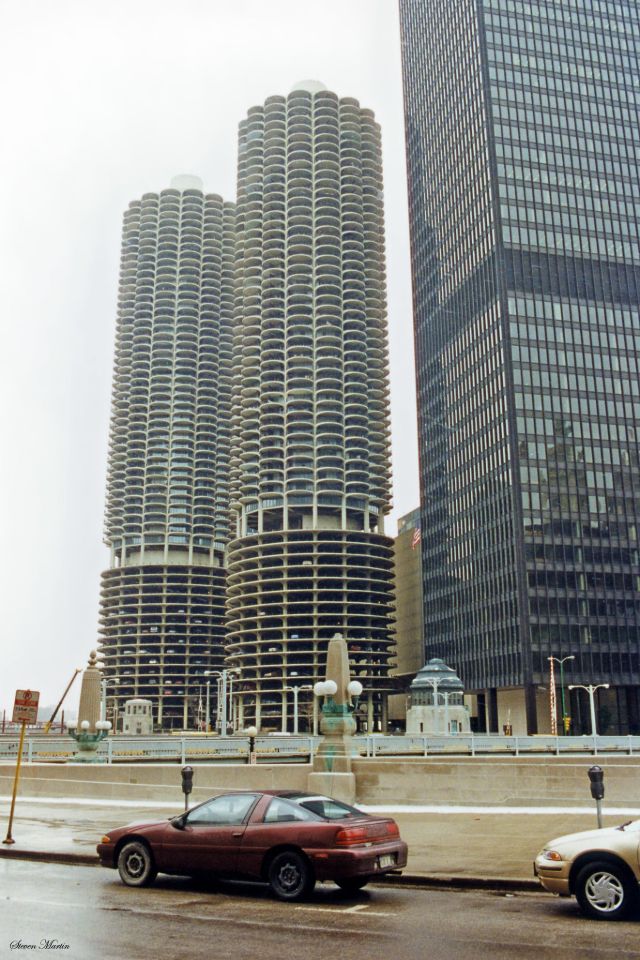
Landmark skyscraper condominiums on the north bank of the Chicago River as seen from Wacker Drive, February 1996.
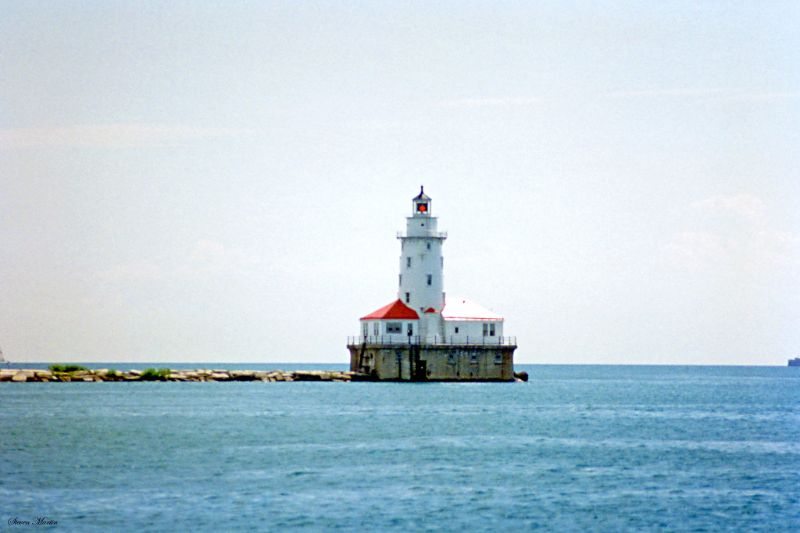
Lighthouse is on Lake Michigan outside the entrance to Chicago Harbor, July 1996.
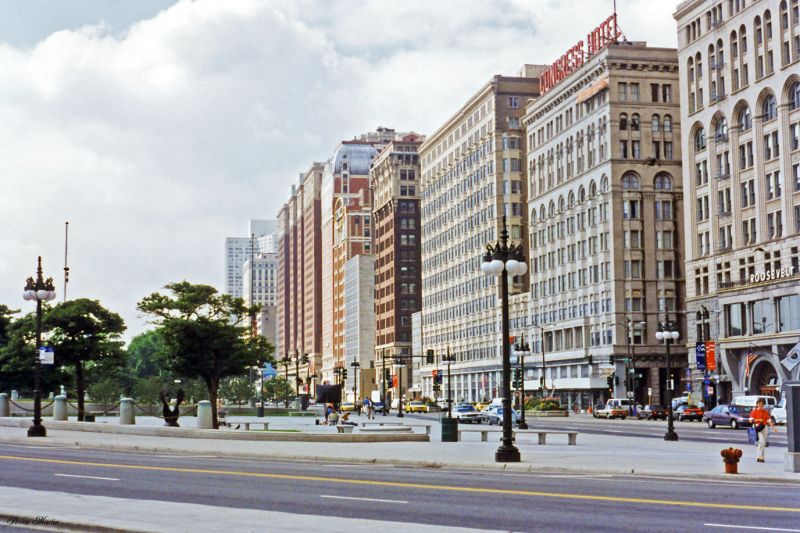
Looking south along Michigan Avenue from Van Buren, Grant Park, Chicago, July 1996.
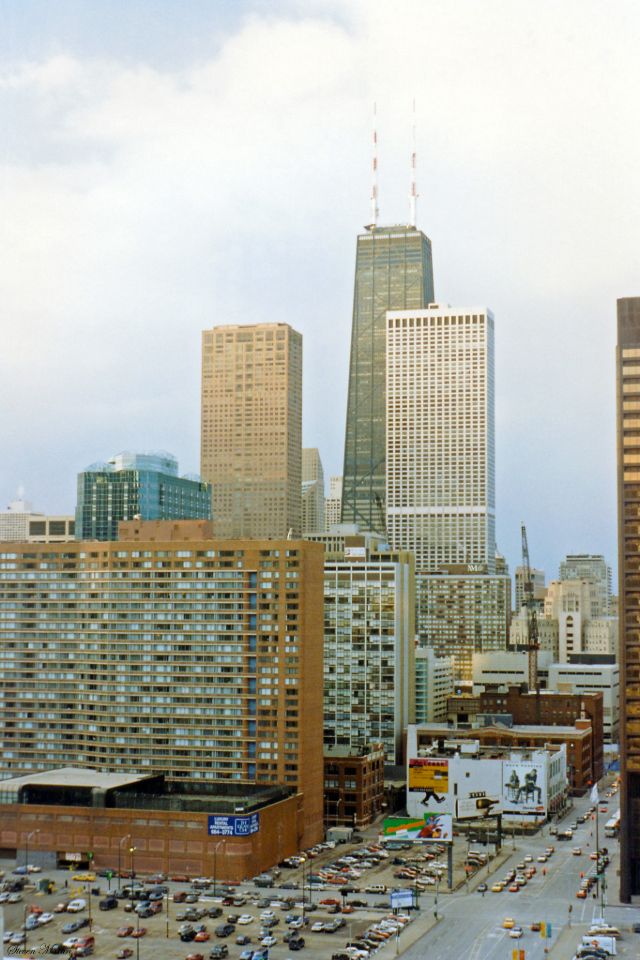
Looking toward the John Hancock Center and Water Tower Place from Sheraton Hotel, Chicago, February 1996.
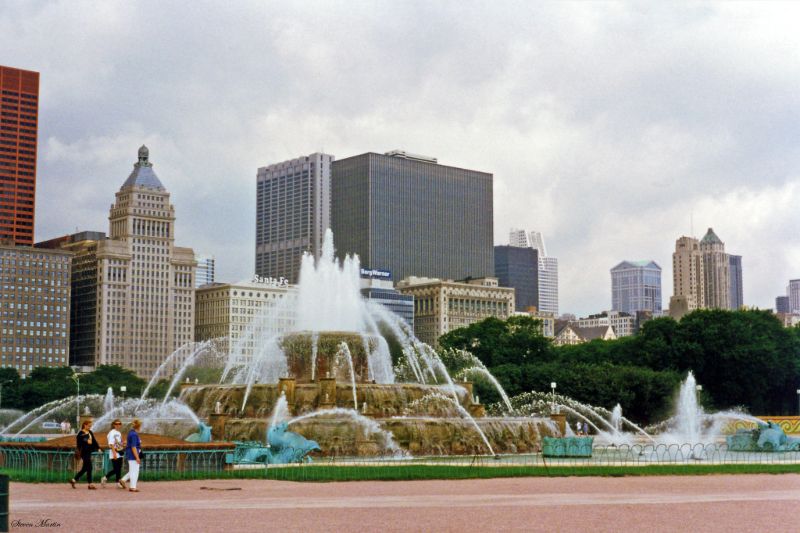
Loop and Lakeshore East skyscrapers viewed from Buckingham Fountain, Chicago, July 1996.
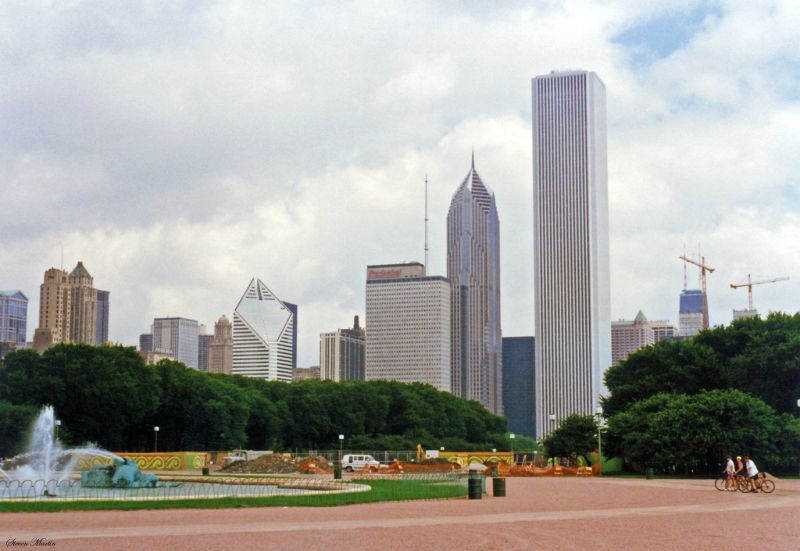
Loop and Lakeshore East skyscrapers viewed from Buckingham Fountain, Chicago, July 1996.
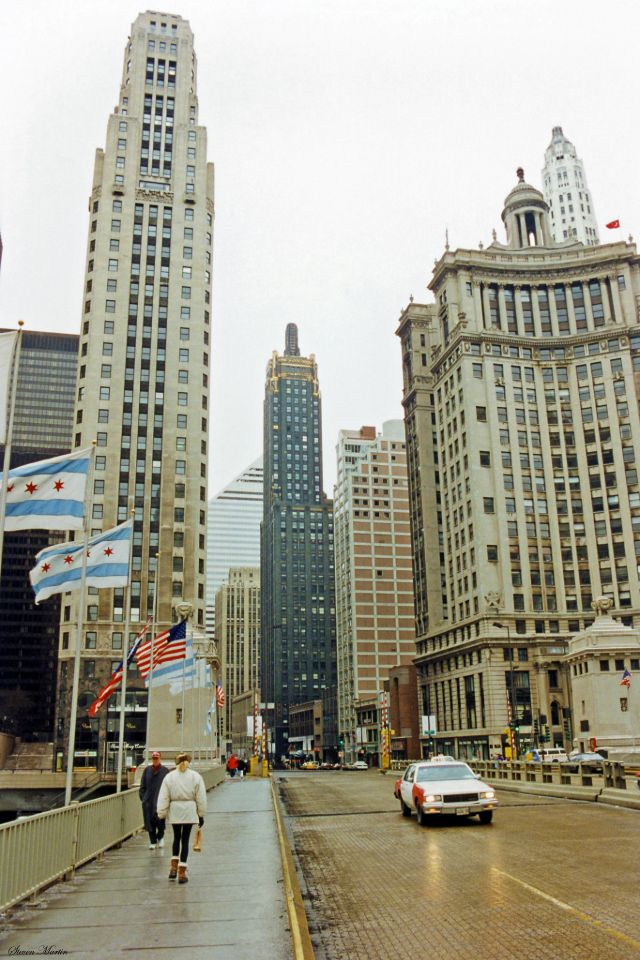
Michigan Avenue looking south from Chicago River Bridge. Three landmark skyscrapers, the 333 N. Michigan Avenue, Carbide & Carbon Building, and the London Guarantee Building, are visible from left to right, February 1996.
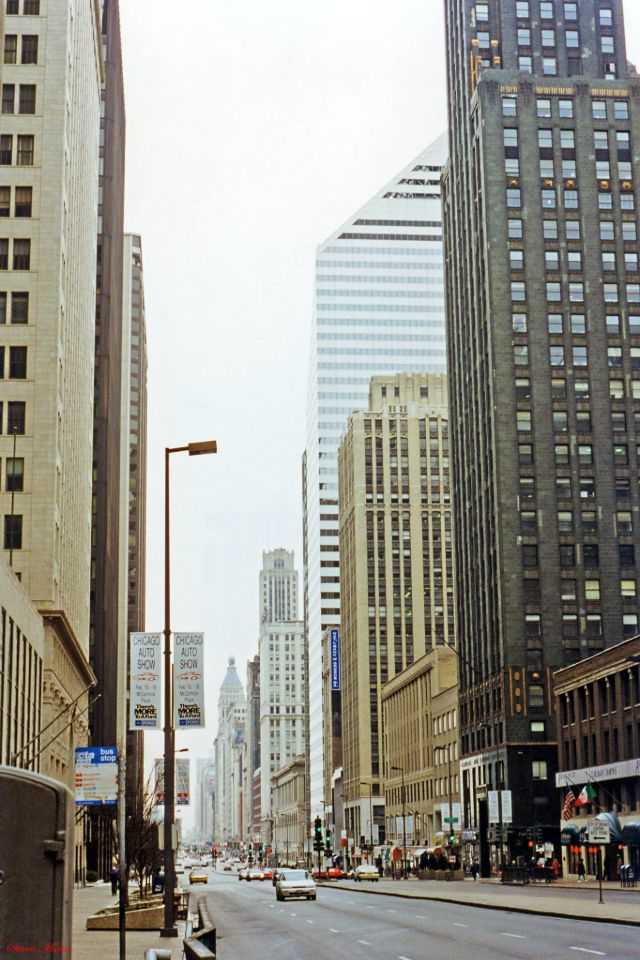
Michigan Avenue looking south of Wacker Drive, Chicago, February 1996.

Museum Campus from Navy Pier, Chicago, July 1996.
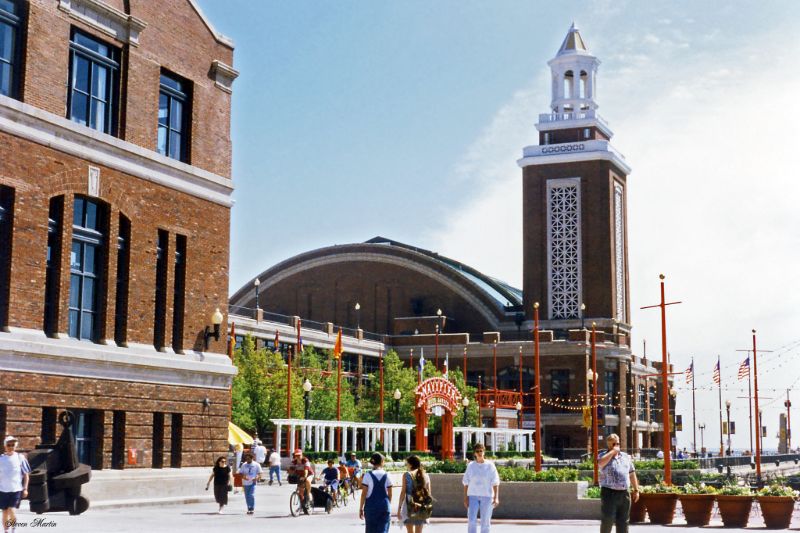
Navy Pier, Chicago, July 1996.

North Dearborn Street townhouses, Chicago, February 1996.
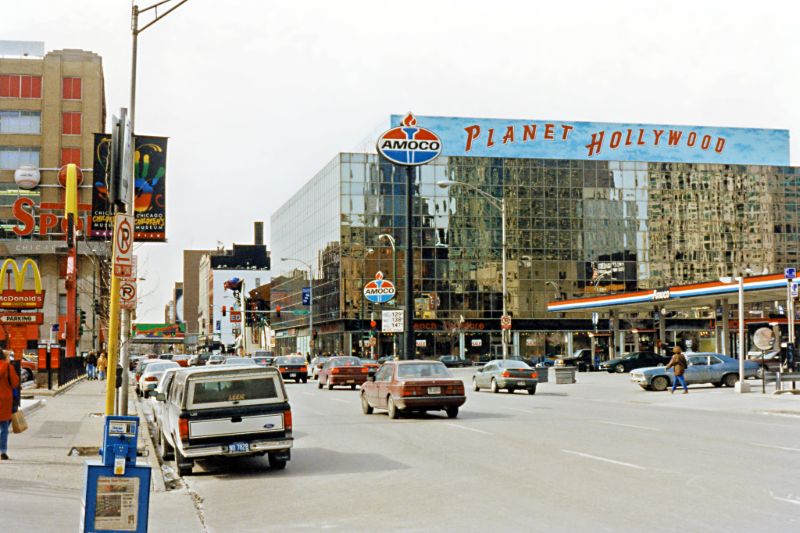
Ontario Street, looking west from in front of the River North McDonald’s, Chicago, February 1996.
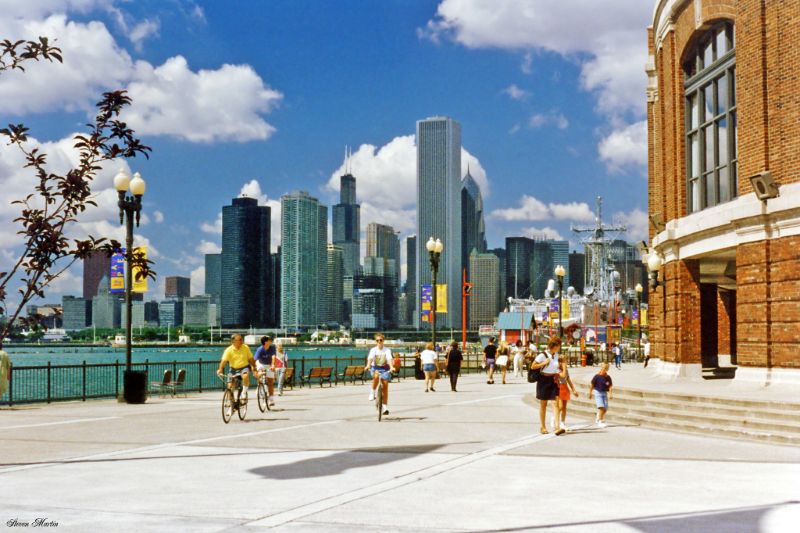
Navy Pier at east end, Chicago, July 1996.
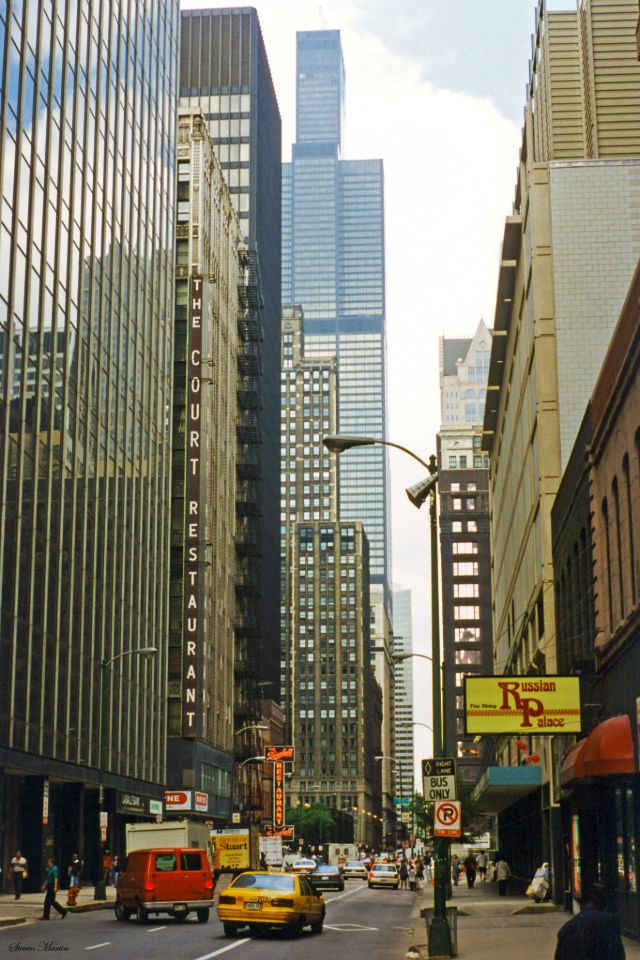
Adams Street from Wabash Avenue, Chicago, July 1996.
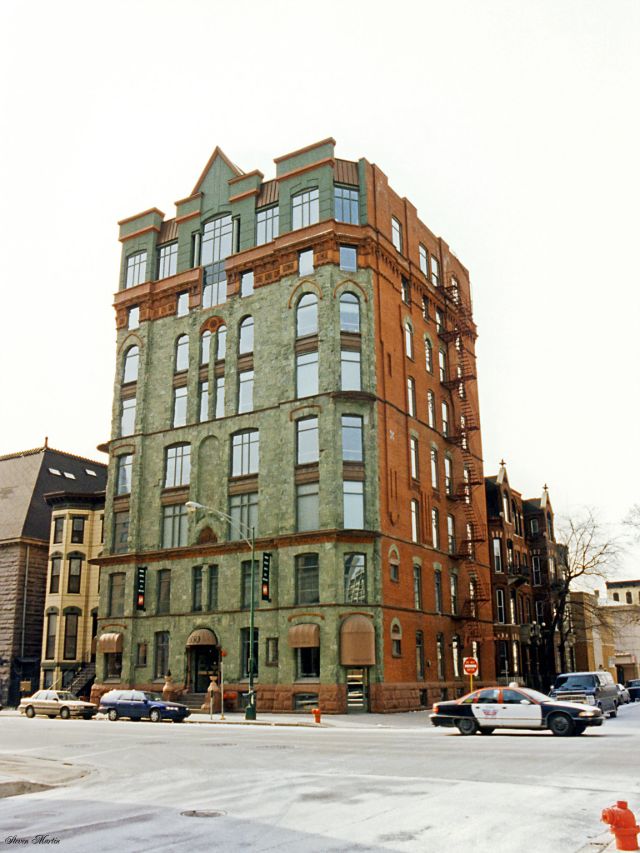
An old apartment building in the River North neighborhood, corner of Dearborn and Erie, Chicago, February 1996.
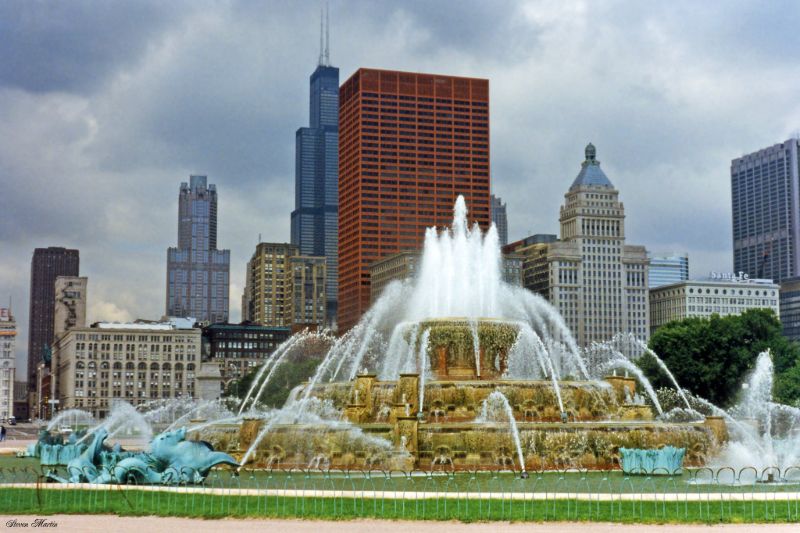
Buckingham Fountain, Chicago, July 1996.
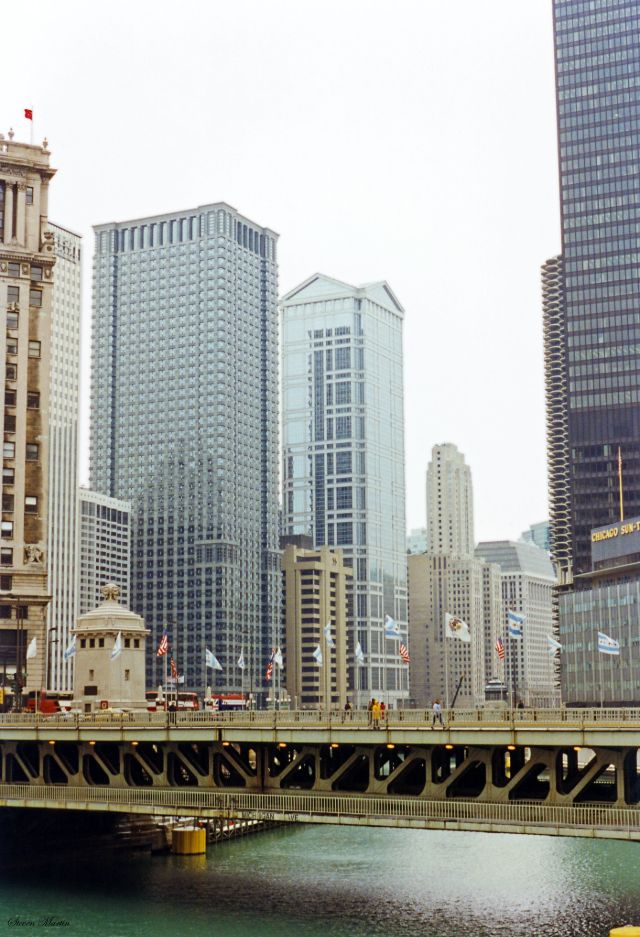
Chicago River and Michigan Avenue Bridge, Chicago, February 1996.
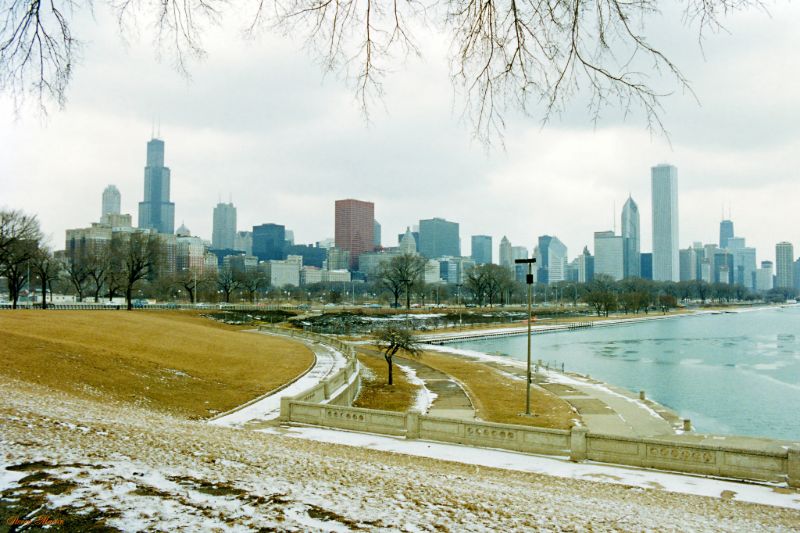
Chicago skyline along the lakefront as it appeared on a winter day in February 1996.
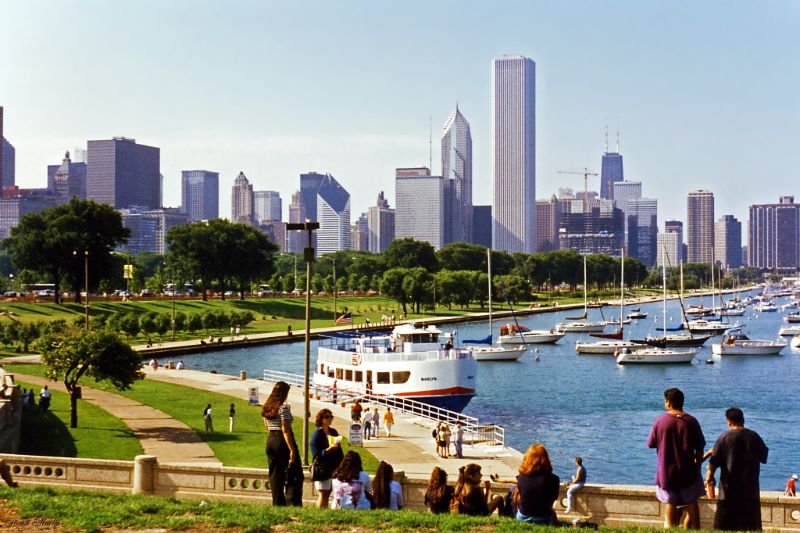
Chicago skyline from Shedd Aquarium, July 1996.
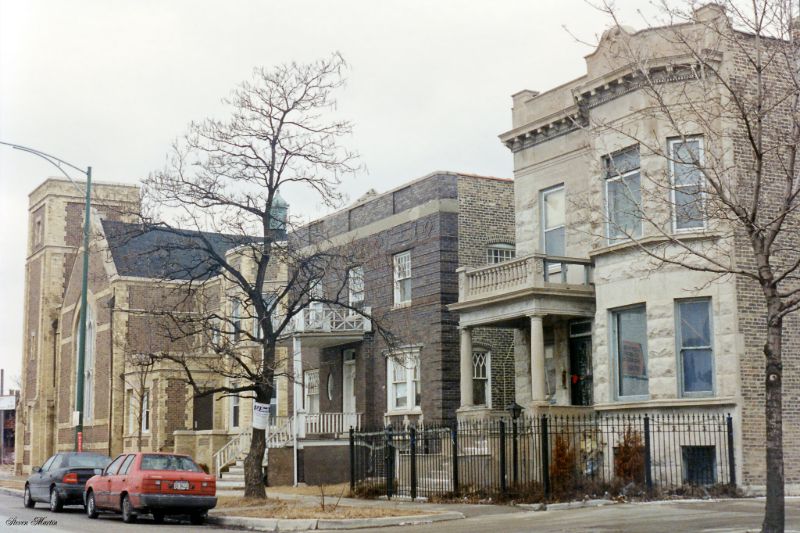
Church and houses on Congress Parkway, Chicago, February 1996.
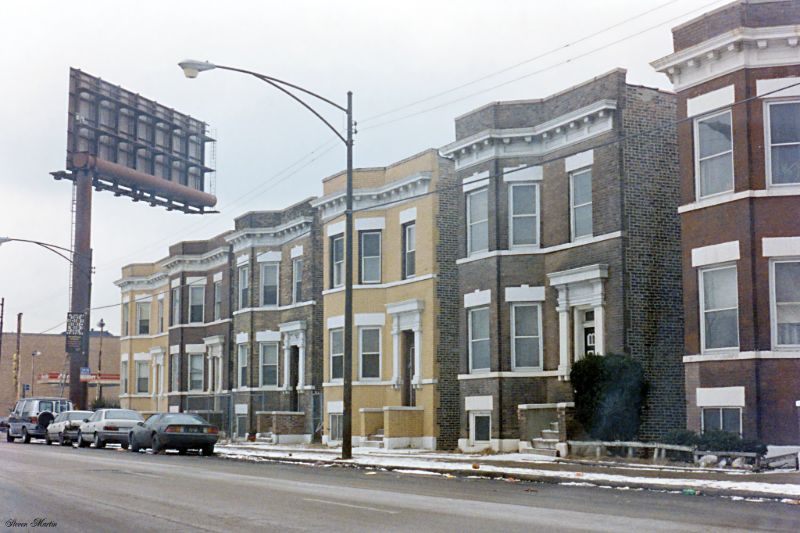
Row of detached townhouses on Harrison Street, Chicago, February 1996.
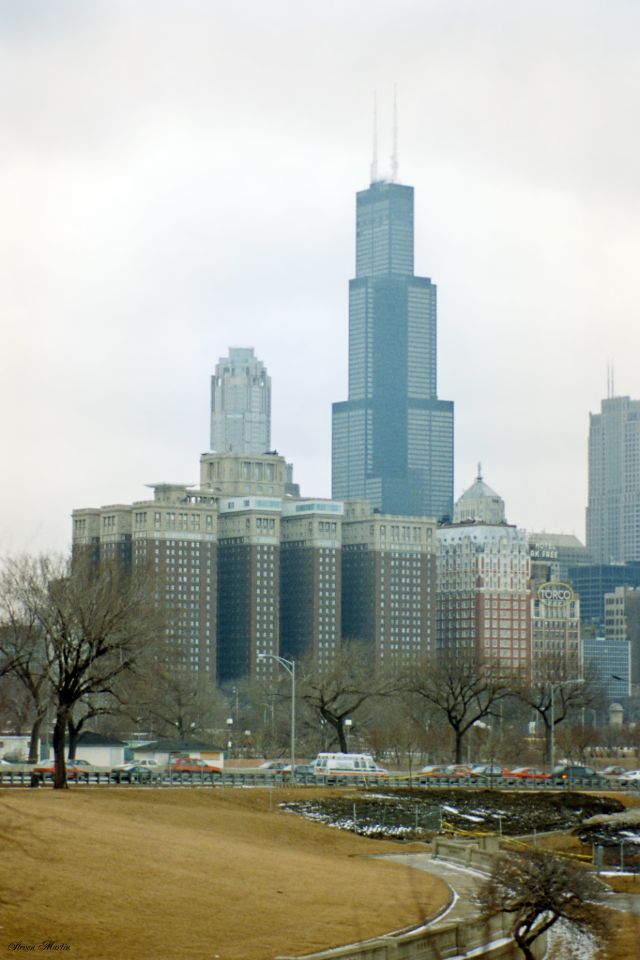
Sears Tower rising over Hilton and Blackstone Hotels, Chicago, February 1996.
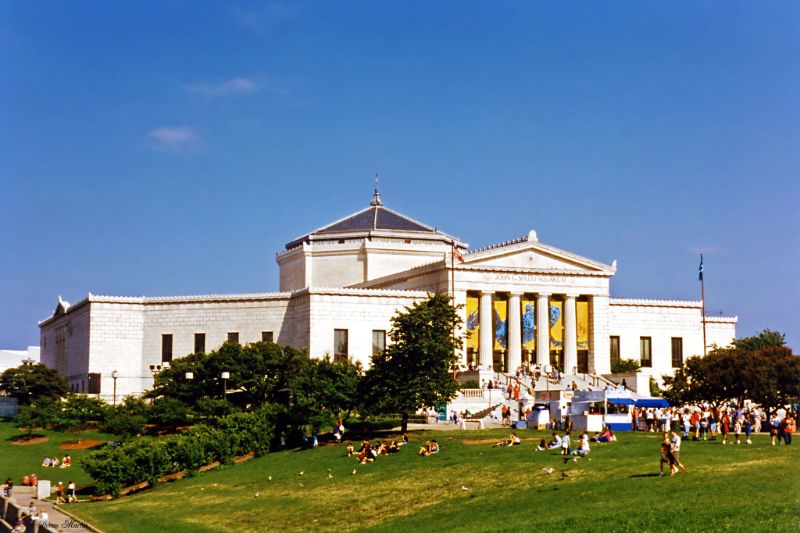
Shedd Aquarium, Chicago, July 1996.

The Art Institute of Chicago. Bronze lion statues flank the main entrance on Michigan Avenue, July 1996.
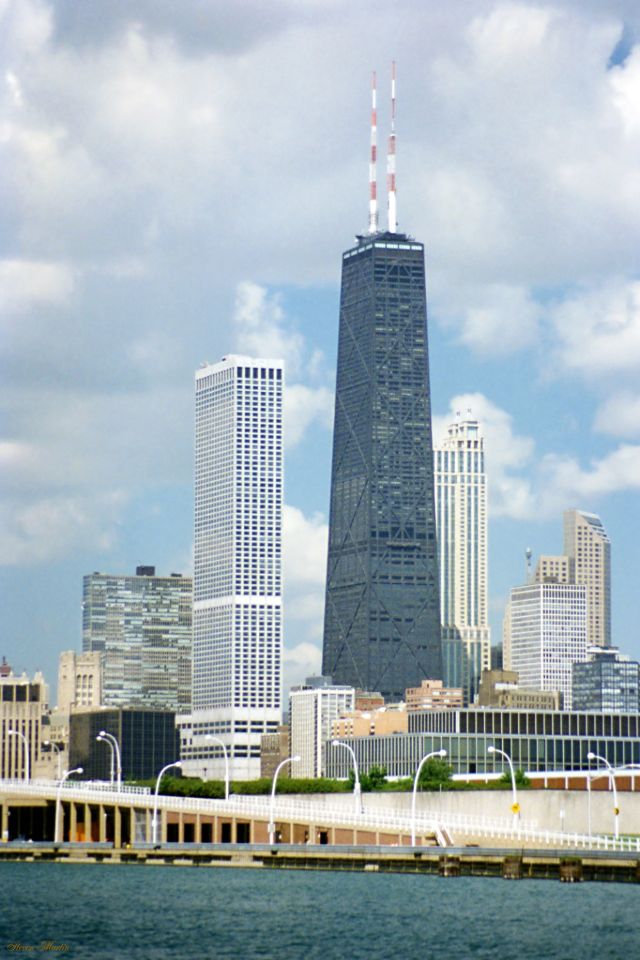
The Water Tower place is the white skyscraper and the John Hancock Center is the tall dark skyscraper, taken from Navy Pier, Chicago, July 1996.
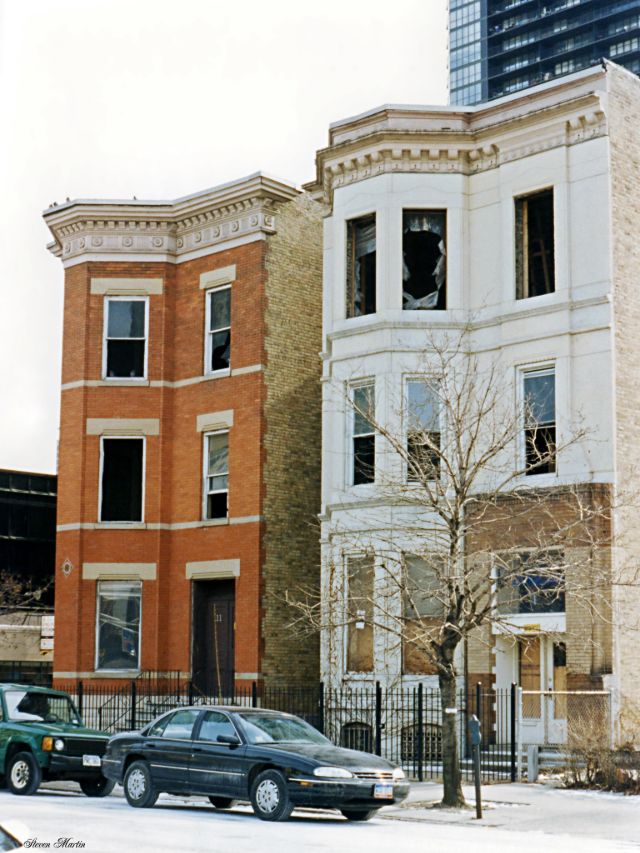
Townhouses facing demolition, River North, Chicago, February 1996.
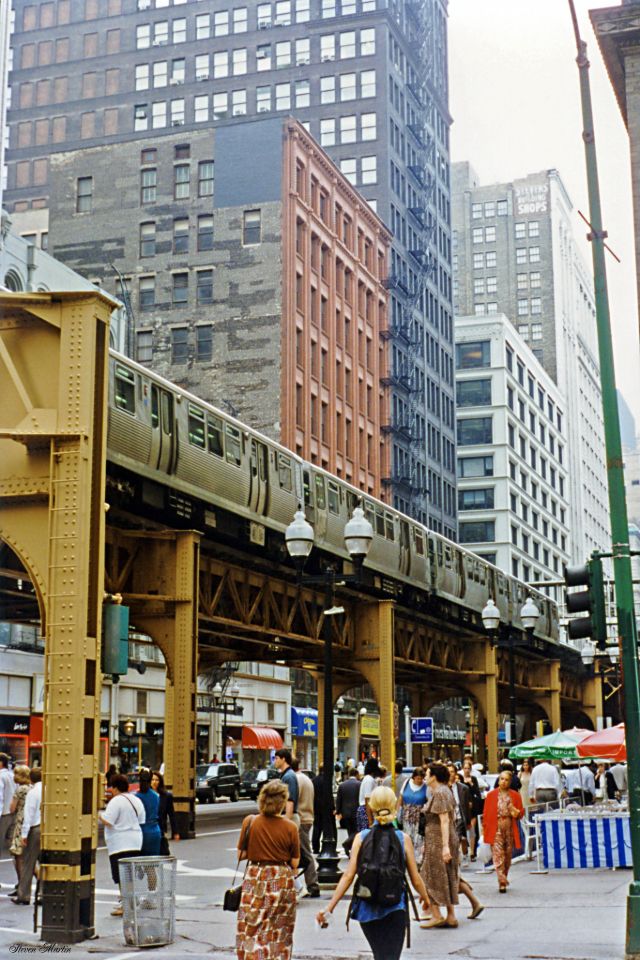
Wabash Avenue looking north from Monroe Street, Chicago Loop, July 1996.
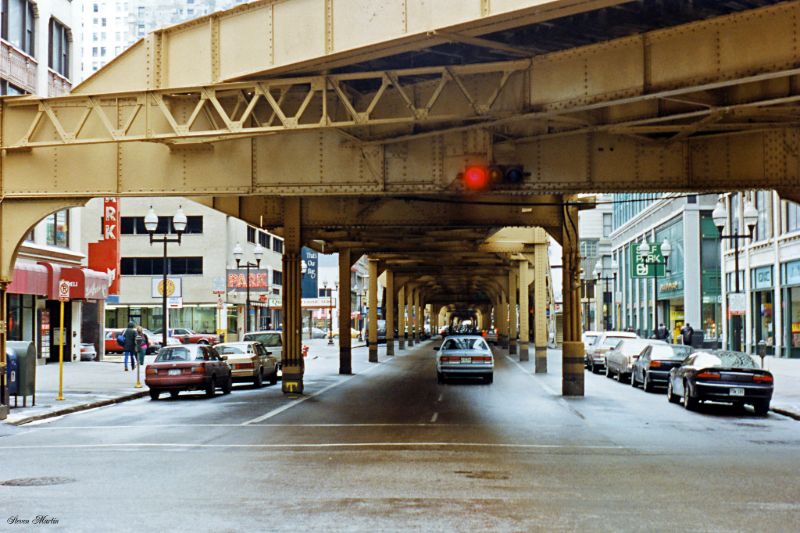
Wabash Avenue looking south from Lake Street, Chicago, February 1996.
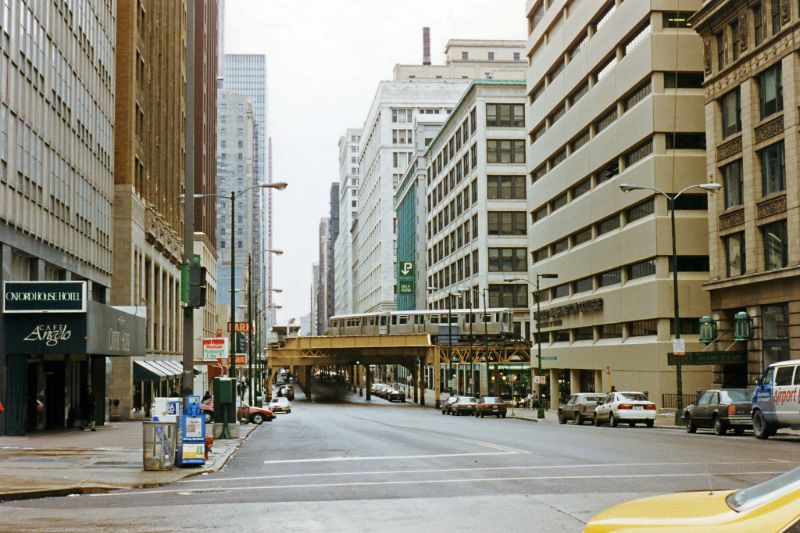
Wabash Avenue looking south from Wacker Drive, Chicago, February 1996.
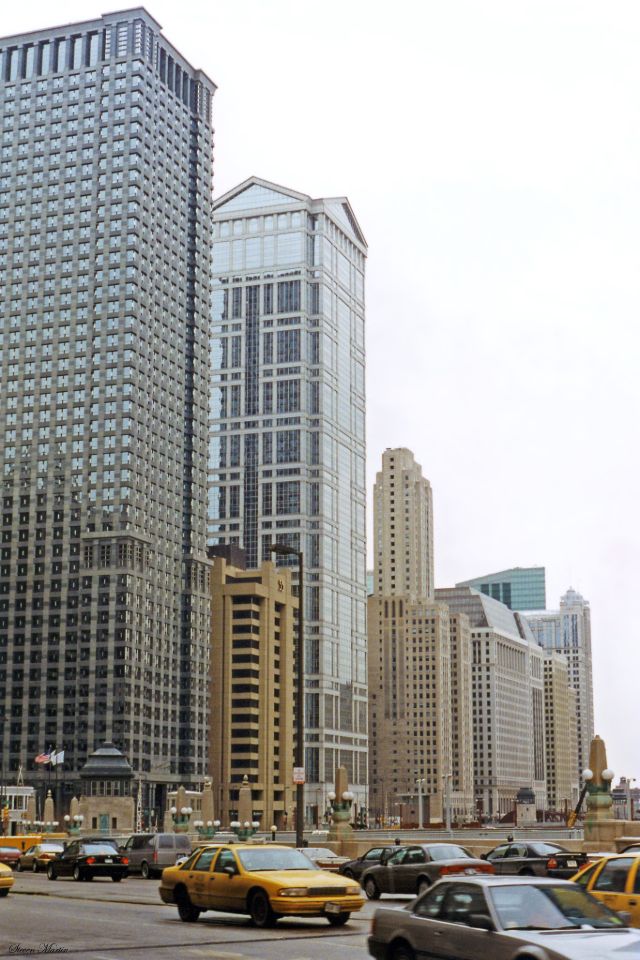
Wacker Drive west of Michigan Ave., Chicago, February 1996.
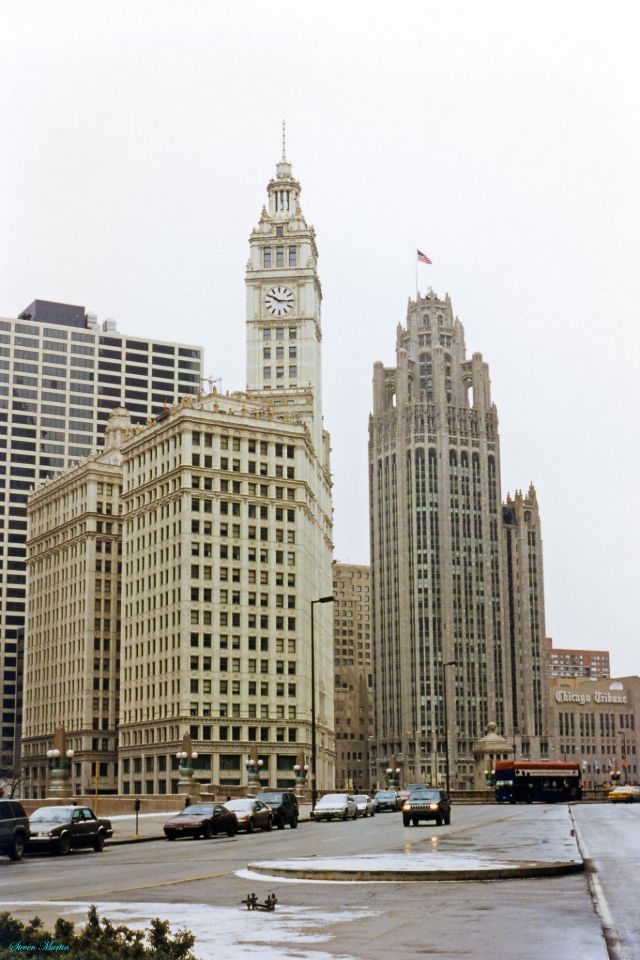
Wrigley Building and Tribune Tower, landmark skyscrapers anchoring the north bank of the Chicago River at Michigan Avenue, taken from Wacker Drive, February 1996.
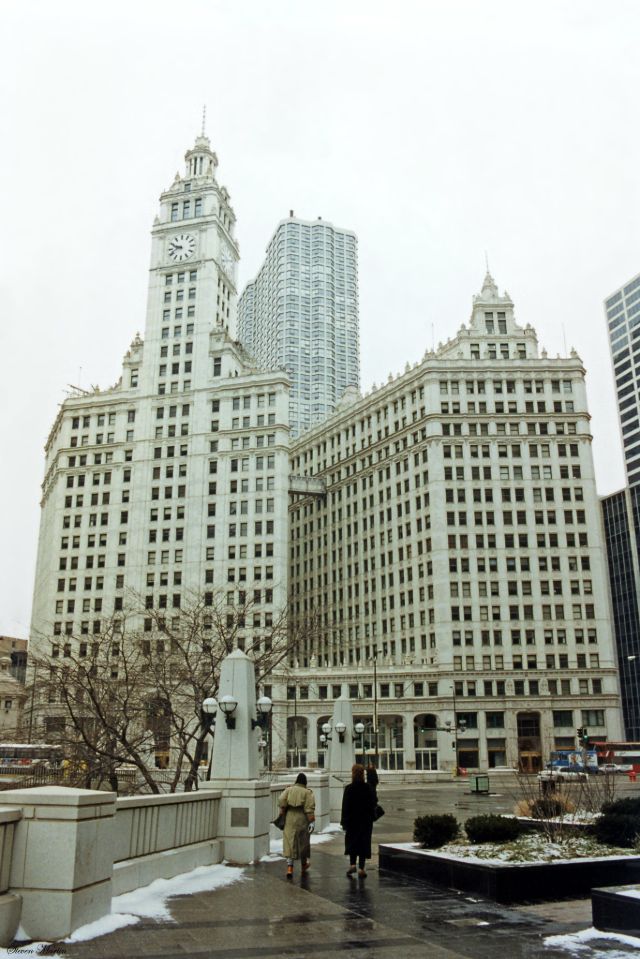
Wrigley Building, Chicago, February 1996.
(Photo credit: Steve Martin via Flickr / flickr.com/photos/stevenm_61/).
